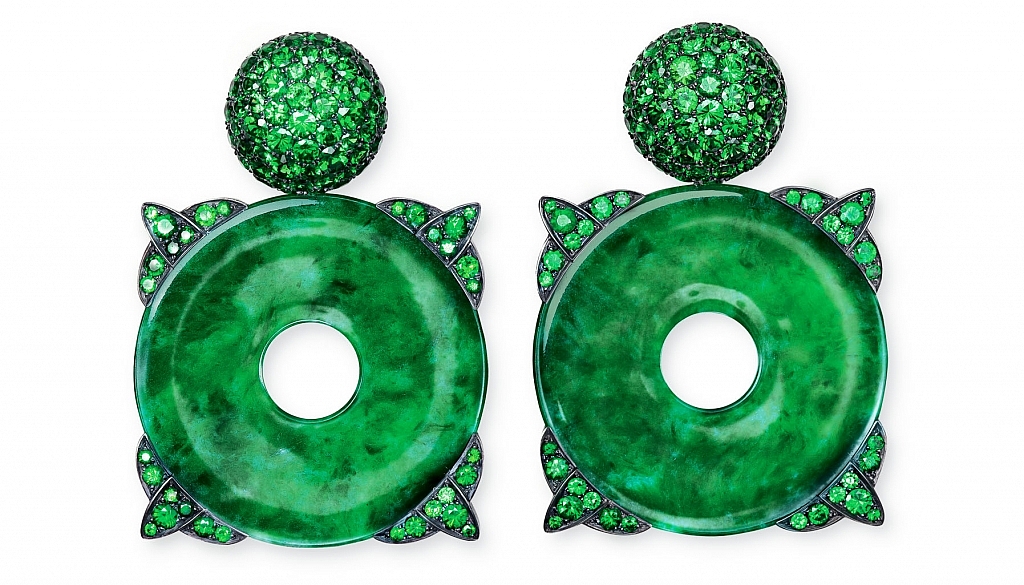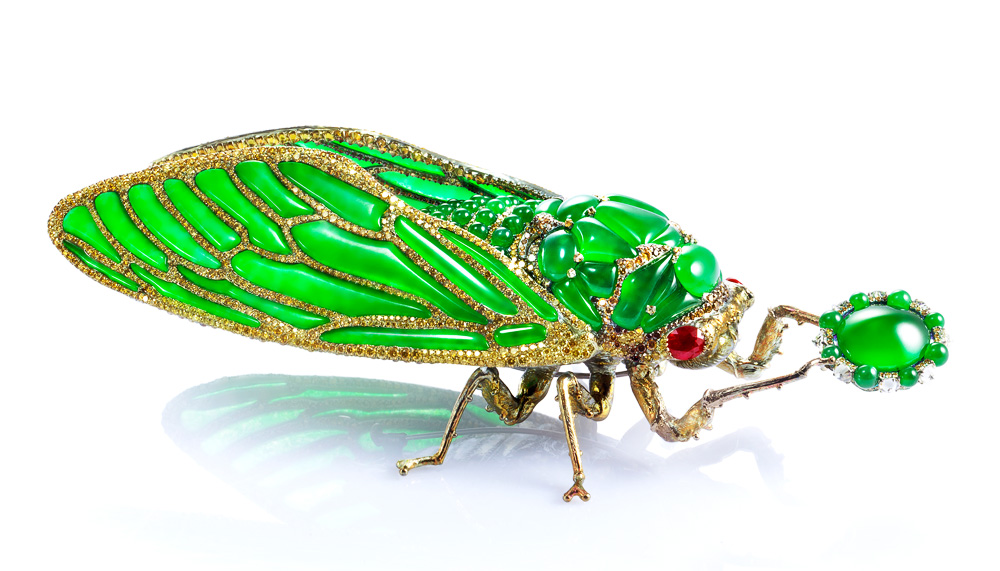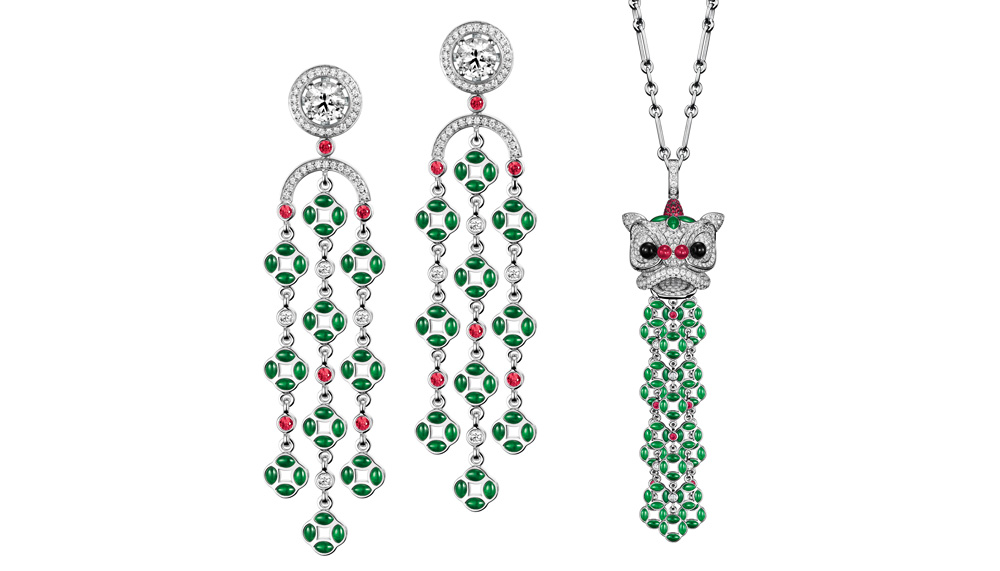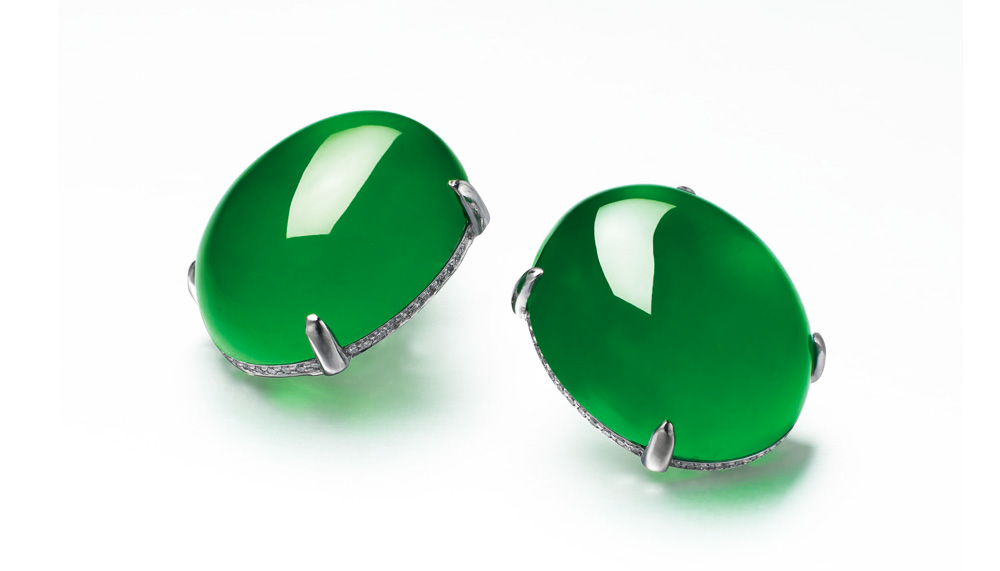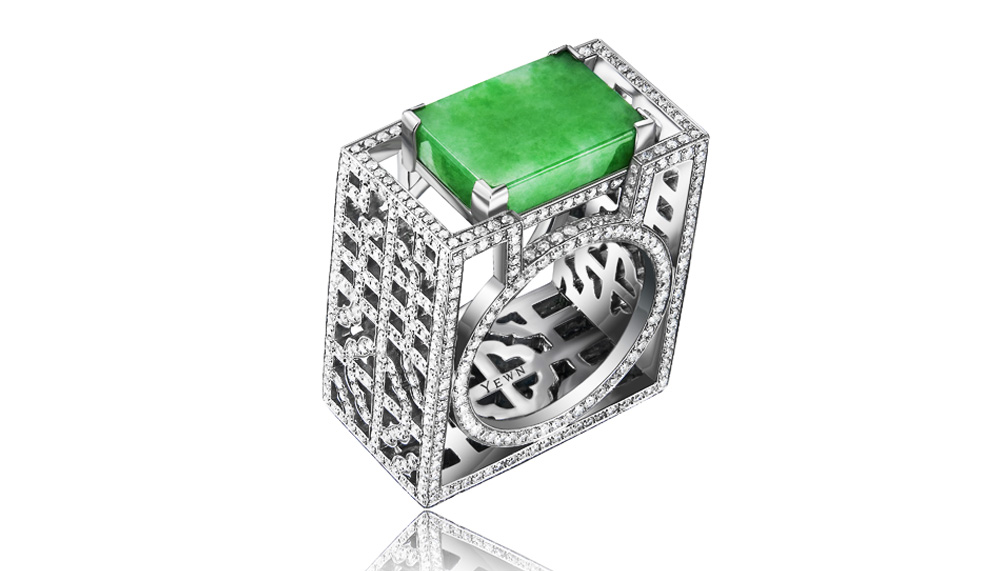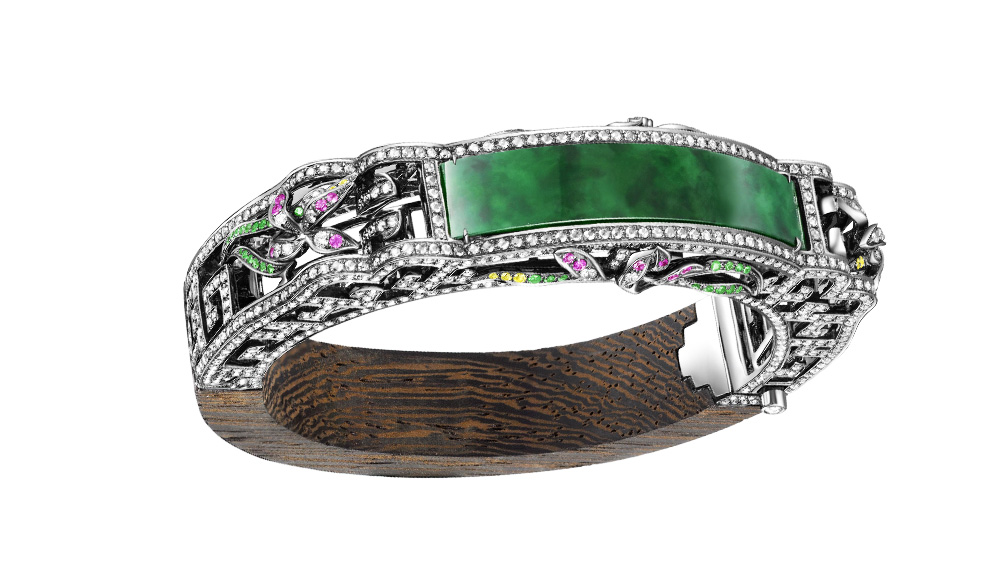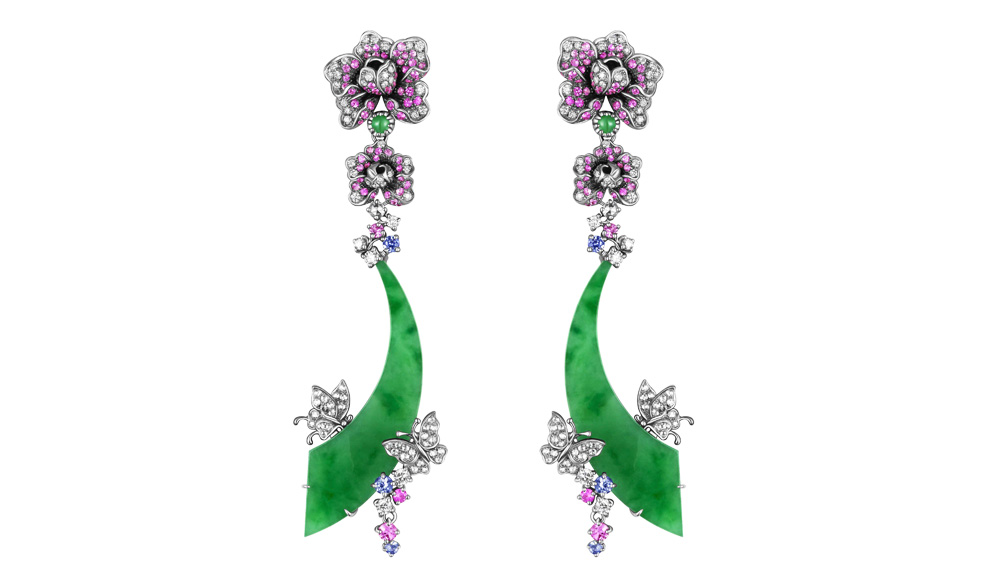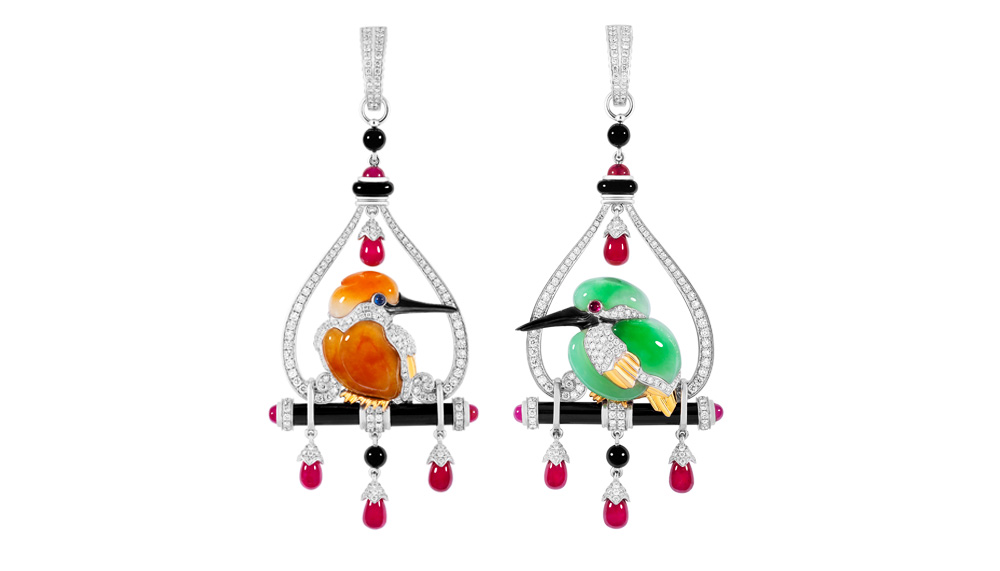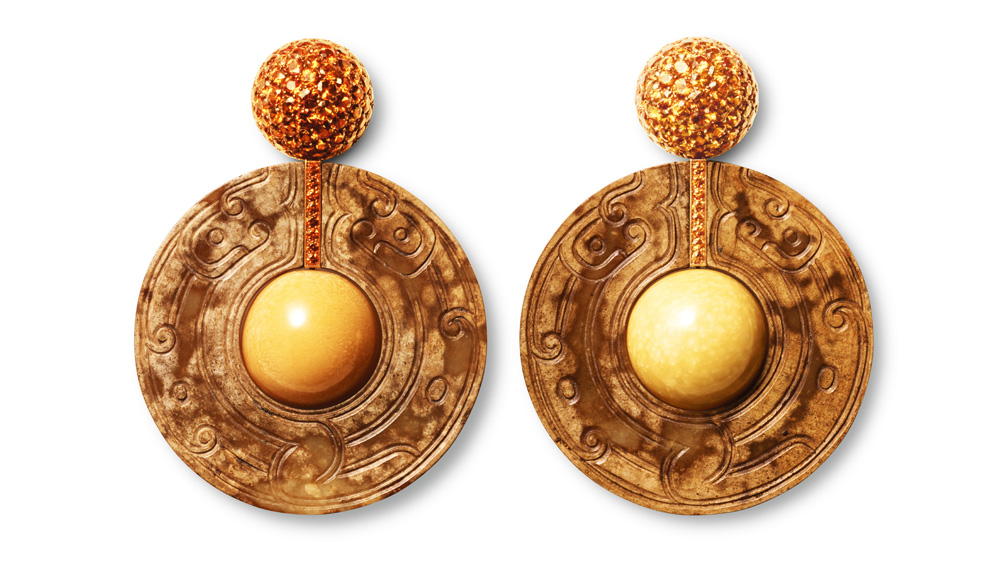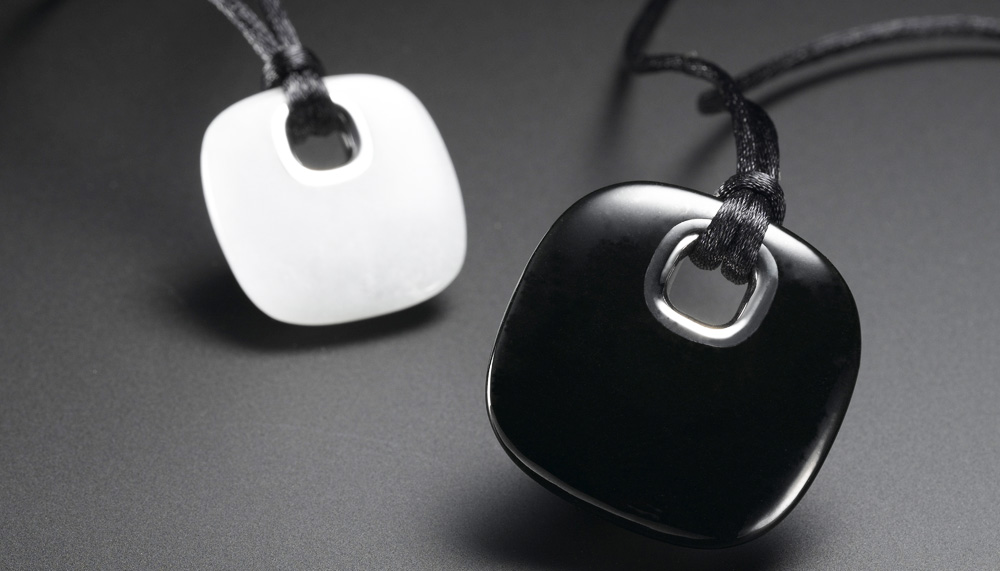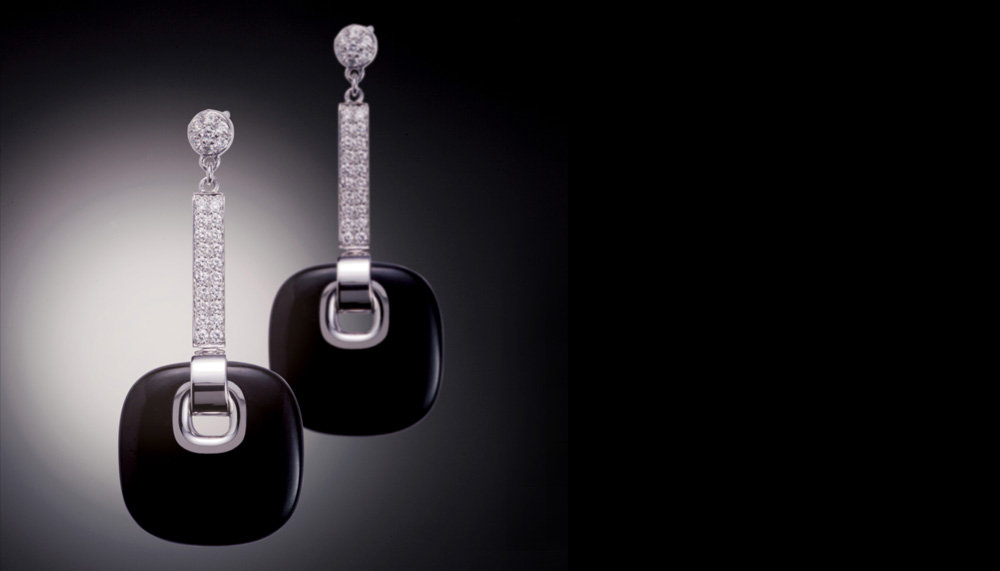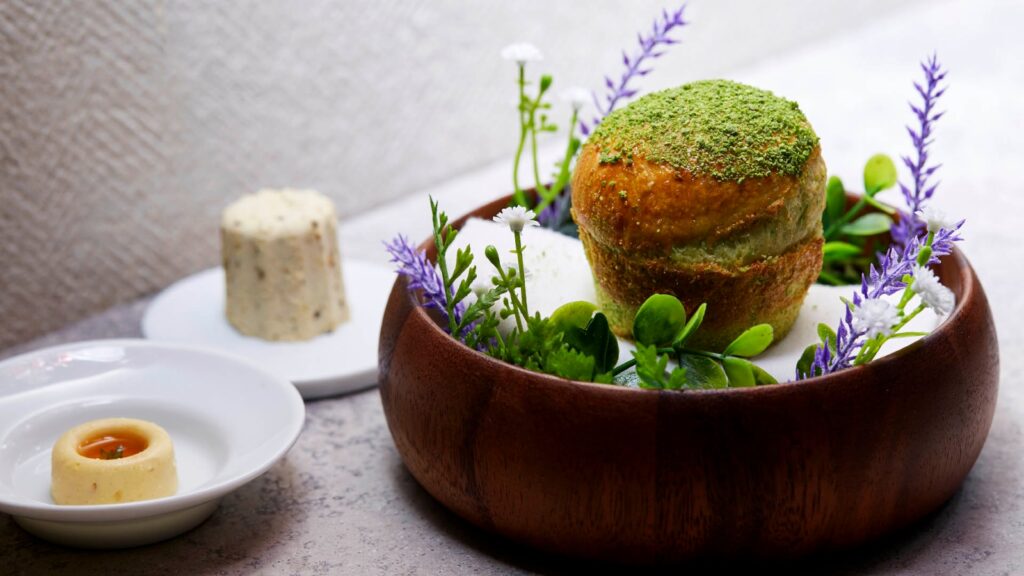The rise and rise of jade in jewellery design
In May 2013, a jadeite and multi-gem ring, described by Christie’s as “exceptional” went under the hammer for US$2,593,885 (RM11.25 million)– five times its estimate. The ring, named Orpheus, was designed by Anna Hu, a Taiwan-born, America-based designer. In April 2014, the Hutton-Mdivani necklace, hailed by Sotheby’s as the world’s greatest jadeite bead necklace, was sold for US$27.44 million (RM119 million), twice its estimate, after 20 minutes of intense bidding by eight buyers. The Hong Kong Trade Development Council estimates that jadeite prices have risen 20 to 30% annually in recent years, while renowned designers like Wallace Chan puts the increase at a conservative threefold in the past decade.
Today’s demand for jade is fierce. The stone, in its nephrite form, began to enjoy prestige and popularity in China a few thousand years ago, and even more so for jadeite, its more luminous, but scarcer cousin which emerged from Myanmar around 1800 to become a favourite in the Qing court. As the modern Chinese grow in affluence and started to look for emblems of their heritage after satiating their desire for Western goods, the “gentleman stone” with its understated symbol of luxury and nobility held a certain irresistible appeal.
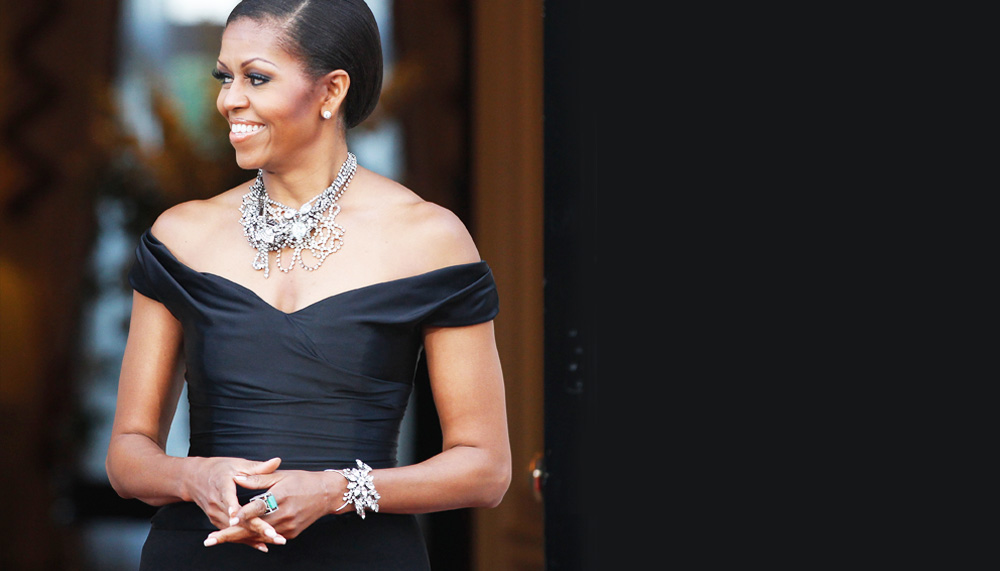
Stone quality is what’s driving prices sky-high among the Chinese, but the post-80’ers, who wish to set themselves apart as tasteful trendsetters, are looking more for a twist on tradition by wearing designs by designers like Dickson Yewn and Dennis Chan of Qeelin, who incorporate wood with unusual coloured jades in lilac and black. These designs have also garnered the notice of non-Asians like Michelle Obama, who propelled the stone into the limelight when she wore the jade and diamond Wish Fulfilling Lattice ring by Yewn. While those of Chinese descent still form the majority of buyers, Bonhams estimates that about 10% of their quality jadeite buyers are not. Christie’s also sees an increasing number of non-Asian buyers, which Vickie Sek, Deputy Director of Christie’s Asia and Director of Christie’s Hong Kong Jewellery and Jadeite Department attributes to a “deeper understanding and appreciation of jadeite amongst international collectors.”
The difficulty in pricing, because there is no official grading system like the Rapaport list for diamonds, adds to the jade’s allure and mystique. Auction houses like Bonhams and Christies have their own internal grading systems, which are aided by experience to a very large extent as qualities like intensity, saturation and colour spread can be subjective. Anastasia Chao, Department Director of Bonhams Hong Kong puts it, “ It’s through time handling jadeite that enables us to learn to evaluate the pieces”. Chao recommends that jadeite be tested by respectable laboratories such as the Hong Kong Jade & Stone Laboratory which can issue “Type A” certificates for untreated jadeite, which have not undergone colour or external material enhancements. “Treated jadeite is worth only a fraction of untreated jadeite,” says Chao.
More people are buying jade, but there is still a distinction between buyers of top-end jadeite and beautifully designed jade jewellery, says Hong Kong-based Dickson Yewn. “Those who would pay a lot just for the stone (incidentally the Chinese) don’t really care about the setting while those who buy jade pieces for the design are not so particular about the stone quality,” says Yewn, who hopes that there will be more overlapping between the two.
This eventuality looks possible. Younger Chinese who are more into the aesthetics of luxury goods rather than flash, are looking for designs that are not blatantly Oriental, a demand met by maisons like Qeelin and Edward Chiu, and independent designers like Wallace Chan and Yewn. The latter’s Jadeite Diamond Wish Fulfilling Lattice ring, for example, has very subtle Chinese influences – they are found in the cloud patterns, which are typical of Chinese fine wood furniture, in the latticed ring band.
Qeelin’s signature collection, Tien Di, is very popular with the Chinese diaspora like American-Chinese actor, Daniel Wu. Its homage to Orientalism is subtle, nuanced mainly through the Chinese ethos it symbolises, rather than flashy dragon motifs – making it a comfortable middle ground for most. Fourth-generation German jeweller Hemmerle is one of the few Western names that have used the stone in its designs. Its unconventional treatment of the Chinese stone, by mixing it with metals like copper and steel, seems to be working well. The brand claims these creations are popular with Asians, Americans and Europeans.
